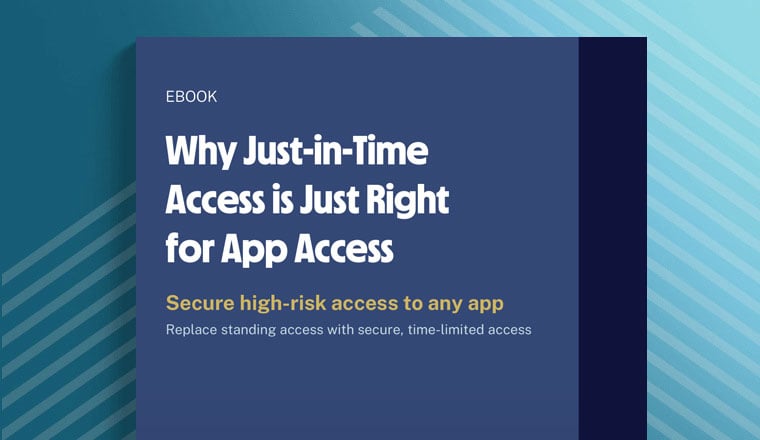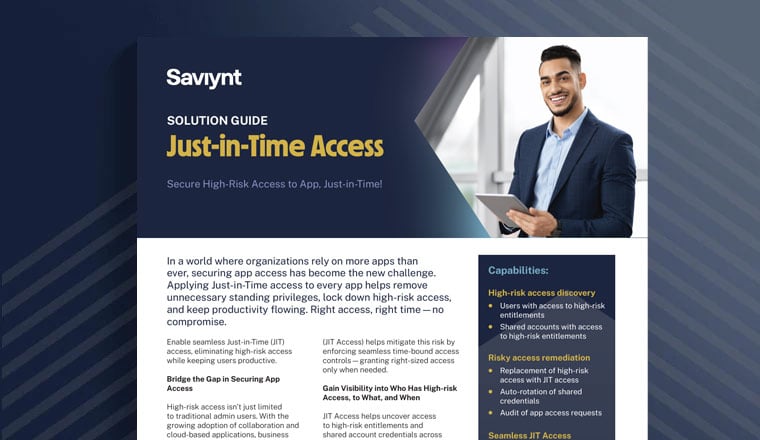Glossary Listing
As organizations adopt more applications across cloud and on-prem environments, JIT access is no longer just for privileged users accessing infrastructure. Business users, developers, contractors, and partners are increasingly requesting elevated access to non-infrastructure apps to get their jobs done. That’s why it’s time to rethink JIT access—not just as a function of Privileged Access Management (PAM), but as a natural and necessary evolution of Identity Governance and Administration (IGA).
A leading example of the JIT model is Gartner’s Zero Standing Privilege (ZSP) framework. ZSP applies Zero Trust principles to access management by eliminating always-on elevated access. Instead, users, services, and devices receive time-bound access only when required—based on defined access policies, behavioral analytics, and business context.
Learn more about Saviynt Just-in-Time Access!



What is Just-in-Time Access?
What is JIT Access?
Just-in-Time (JIT) access provisioning is a security approach that grants users, applications, systems, and processes the right level of access—only when needed, and only for as long as necessary. Once the task is complete, access is automatically revoked, reducing risk and minimizing attack surfaces.As organizations adopt more applications across cloud and on-prem environments, JIT access is no longer just for privileged users accessing infrastructure. Business users, developers, contractors, and partners are increasingly requesting elevated access to non-infrastructure apps to get their jobs done. That’s why it’s time to rethink JIT access—not just as a function of Privileged Access Management (PAM), but as a natural and necessary evolution of Identity Governance and Administration (IGA).
A leading example of the JIT model is Gartner’s Zero Standing Privilege (ZSP) framework. ZSP applies Zero Trust principles to access management by eliminating always-on elevated access. Instead, users, services, and devices receive time-bound access only when required—based on defined access policies, behavioral analytics, and business context.
Learn more about Saviynt Just-in-Time Access!
Resources


